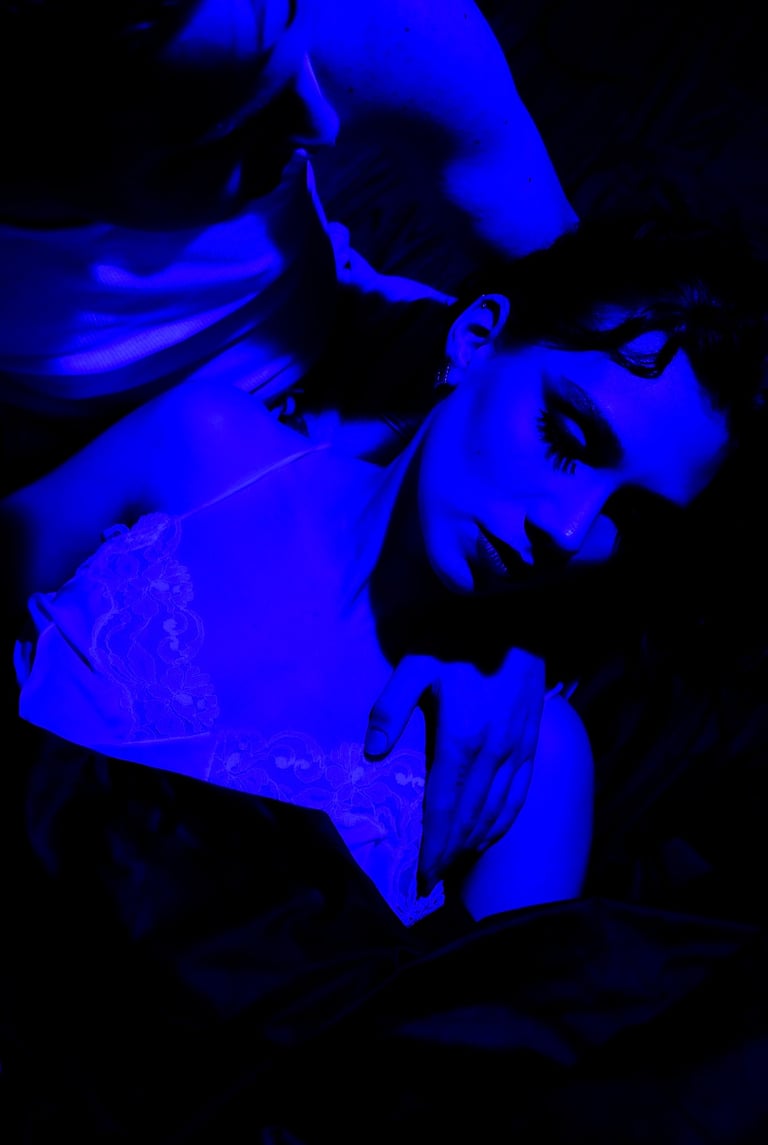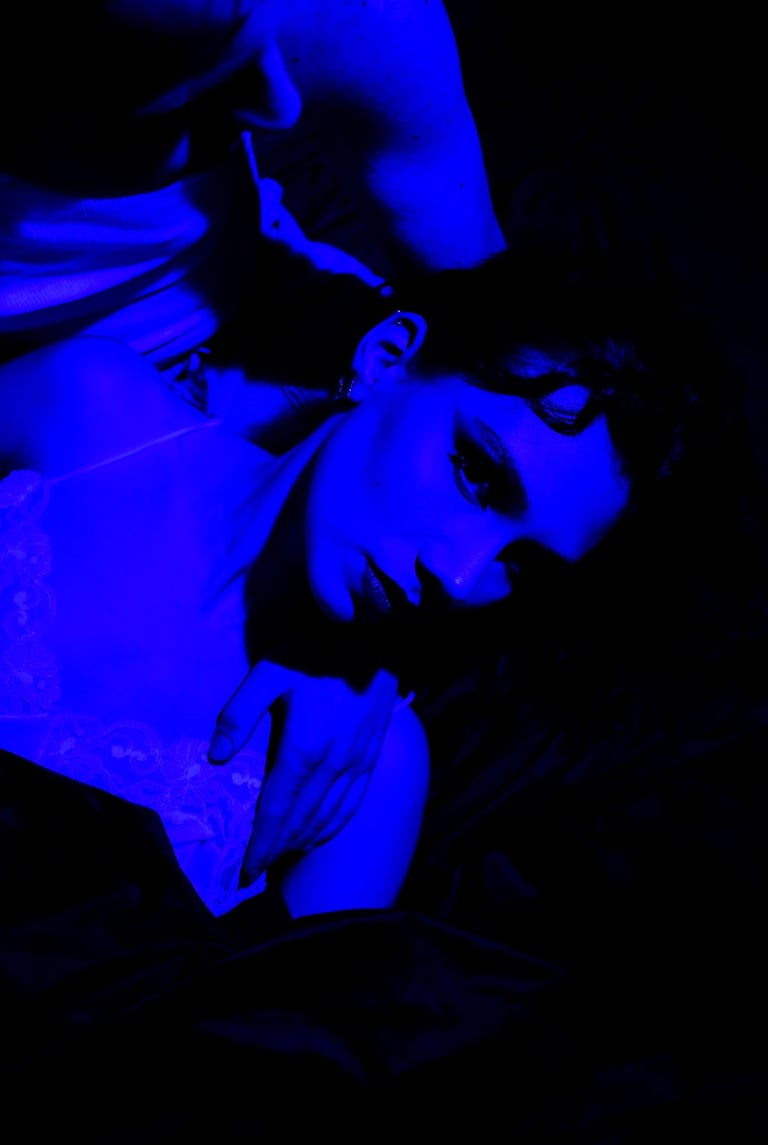Buried in the Blues
By Kitty Quinn, Photographed by Milan Lazovski, Makeup by Kitty Quinn, Styling: Milan Lazovski & Kitty Quinn, Models: Libby Anderson and Austin Scott
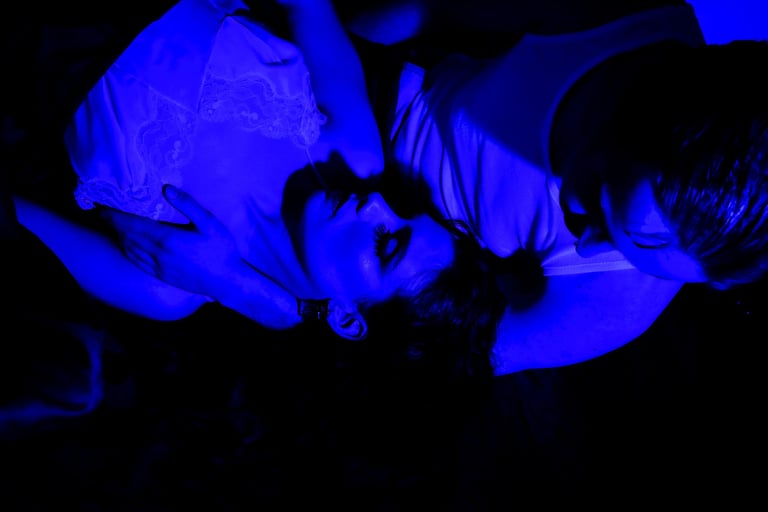

Color has always been known as one of the defining factors in the way the human mind perceives anything from emotions to visual appeal. Though all colors have their effects, arguably the most crucial are the three primary colors— red, blue and yellow. Of the three, however, blue has historically left a mark on the art world unlike any color before. From the renaissance to modern times, the color blue has been used to represent a range of emotions spanning from melancholy to tranquility depending on the hue.
Among the first to use blue within art, ancient Egyptians associated the color with the sun god, Ra, and the afterlife— thus its popular appearance in a plethora of their stunning sculptures and frescos. Similarly, blue was popularly seen in ancient Greece with the use of lapis lazuli and other precious stones to create rich pigments for their paintings. However, blue truly saw its rise during the middle ages within its appearance throughout art centered on religious themes. Previously more scarce, the color saw its increase in use partially due to the new technological developments that led to easier mass production of blue pigments (such as the famous Prussian blue and ultramarine). From the 19th and 20th centuries on, it continued to be a pedestal in the ever-changing world of art— and has even begun to be used in more innovative fashions in recent years.
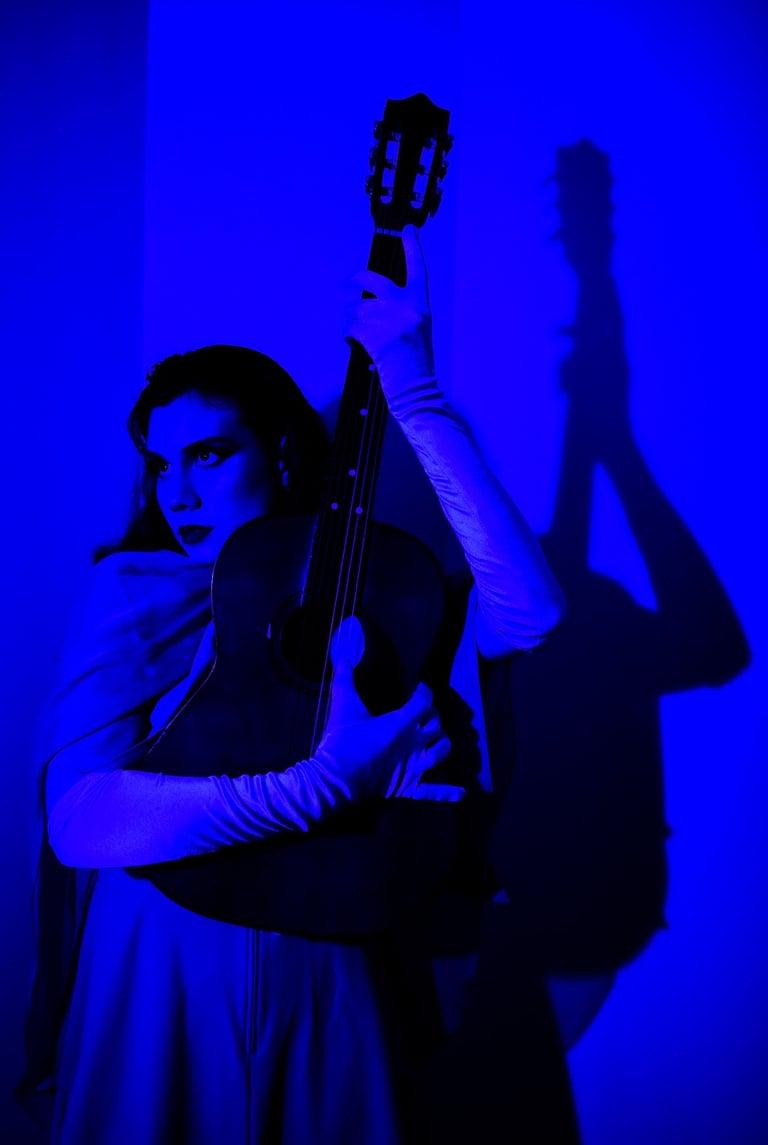

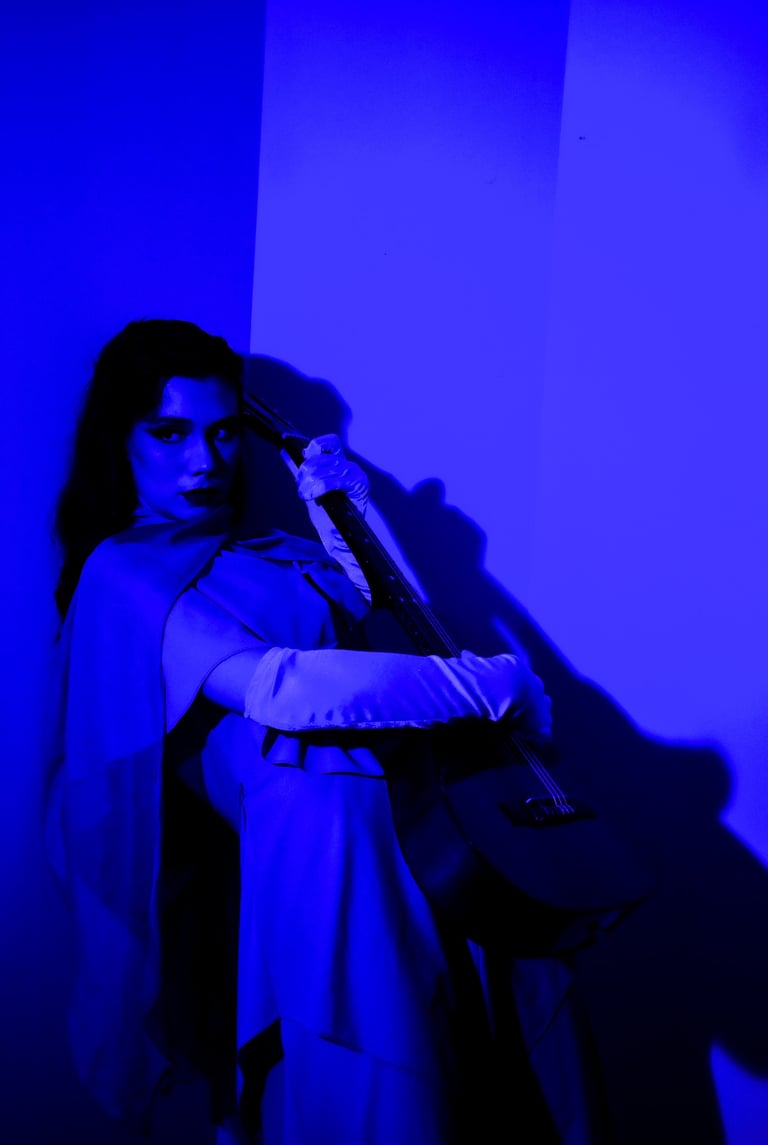

During the 20th century, although many artists such as Mark Rothko, Yves Klein and Yayoi Kusama utilized blue throughout their artwork, none did it quite like Pablo Picasso. Starting approximately around 1901, Picasso’s Blue Period began following a trip through the rowdy streets of Spain and the suicide of his friend, Carlos Casagemas, in February of that year. Using the color blue, Picasso reflected on his experiences with poverty and depression— featuring beggars, the old and the frail, the blind, prostitutes and drunks most commonly. With a monochromatic twist, Picasso also utilized aspects of the popular fauvist art movement inspired by Henri Matisse in order to curate his now unmistakable style. It stated that another significant influence on this period was the artist’s visit to a women’s prison called St. Lazare in Paris where nuns served as guards. This then inspired his painting Two Sisters, where Picasso’s knack for mixing the mundane with religious iconography was born. Another theme displayed throughout this period was the desolation of social outsiders in reference to his depression, feelings of his own self-isolation, and the general atmosphere of the beginning of the era. Moreover, Picasso also produced several works that could be considered philosophical and in reference to humanitarian causes. One of the most famous pieces of this period, La Vie, has been argued to be a great example of the artist touching on these themes— birth, death, sex and more. In addition to these paintings, Picasso experimented with prints of his work predating the Blue Period in which he included hand-applied watercolor to add dynamic to the look and texture. While this period was one of darkness, Picasso came out as a more skilled artist and helped define him as one of the most influential modern artists through his self-exploration and effective artistic expression.
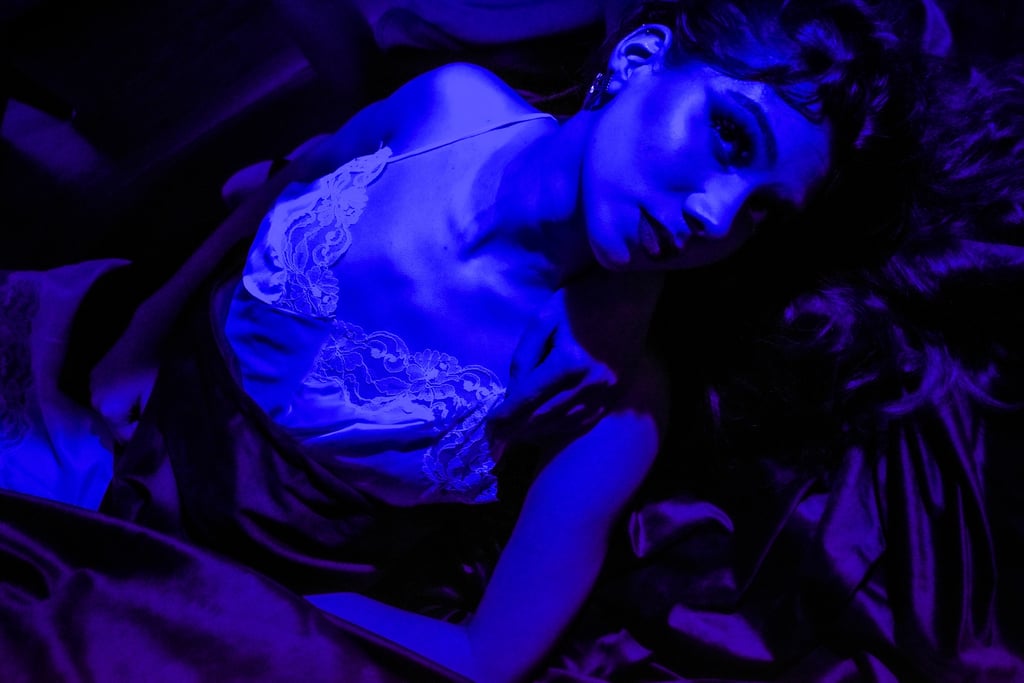

The use of blue in art isn't limited to painting, however— much like Picasso, Joni Mitchell’s words served as her mode to paint vignettes of heartbreak, loss and transformation using music as her canvas. Mitchell bled her own blues and splashed the 1970s pop music zeitgeist with a much-needed nuance following the release of her 1971 album appropriately titled, Blue. Inspired by the romantic literary movement of the 18th and 19th centuries and the blue periods of fellow artists in the first half of the 20th century, the Canadian musician married her loss of love to a generation still reeling from the turbulence of the 1960s and created one of her most celebrated bodies of work. Mitchell once compared herself to a filmmaker, “I write rhyming little movies,” continuing on to say, “I’m the playwright and the actress”. This shows throughout the album as Mitchell utilizes her trademark narrative-esque songwriting style to assemble an almost autobiographical collection of songs that has now become a blueprint for contemporary songwriting. Following the path of a folksinger on her first three albums, Blue was the first time Mitchell truly said exactly what she wanted, and has not looked back since. In a world of drab pop drivel, Mitchell created what could be described as pop literature and has inspired several artists ranging from Björk to Prince to even Taylor Swift. Following Blue, Mitchell had transformed herself as an artist similar to Picasso following his Blue Period and moved on to new levels of artistic expression in her subsequent albums
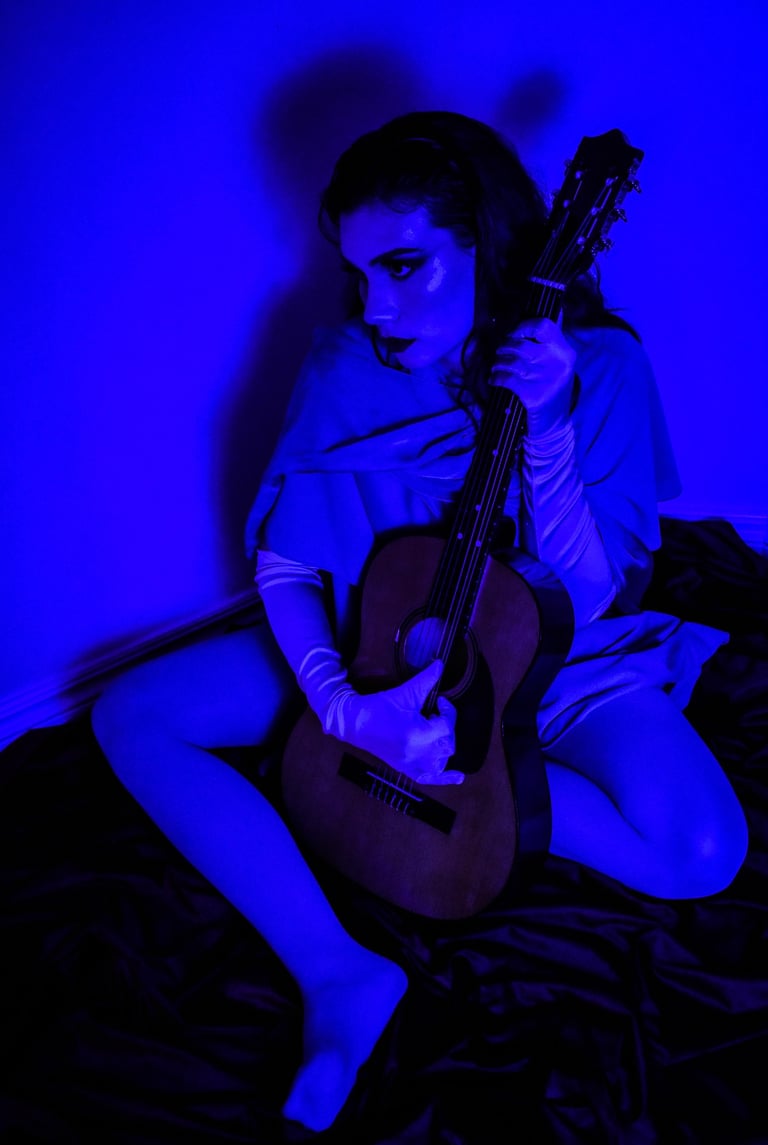

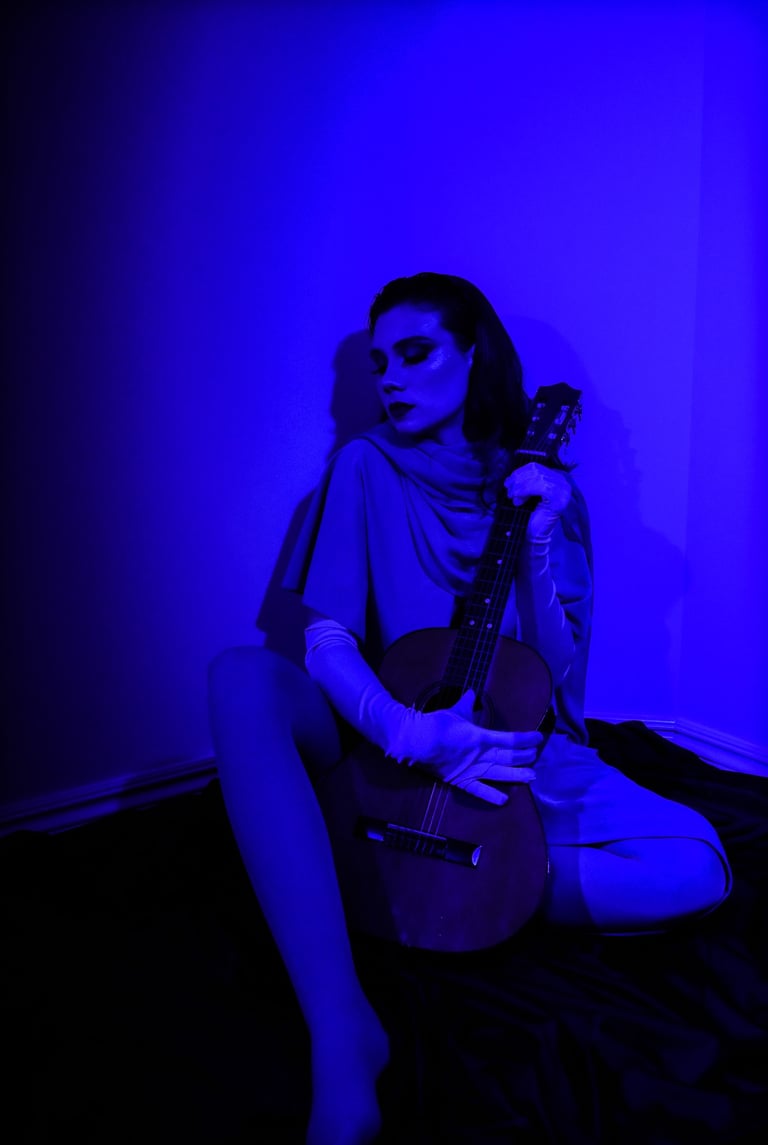

Sharing a title with a song originally written in 1951, David Lynch’s 1986 neo-noir Blue Velvet explores the color blue in a more non-traditional sense. While Picasso and Mitchell relied on the color’s more melancholy meanings, Lynch leaned into the mysterious and hypnotic qualities of the hue within this cult classic. Ironically, though the color is named in the title, it is seldom shown throughout the film. In fact, a more prominent color seems to be red— which was used in order to foreshadow events like danger and sex throughout. The motif of blue is used in the film primarily to signify major plot points such as Jeffrey appearing at Dorothy’s home in a blue bug exterminator outfit or the blue lighting on the red velvet curtains as she sings the title song of the film in the next scene. The use of blue is more effective in this sense, as the rarity of it makes it all the more noticeable throughout— another example being the blue velvet dress that is shown periodically in several different states of appearance ranging from pristine to disheveled in order to make the audience feel unsettled. Lynch didn’t let the color blue define this work but rather highlight it in ways that enhanced it, going on to show the true range of using colors as symbolism. The audience is welcomed and dismissed with the unwavering blue velvet curtain, furthering Lynch’s intended message of the hidden things in life, whether it be with the world or within the personalities of others.
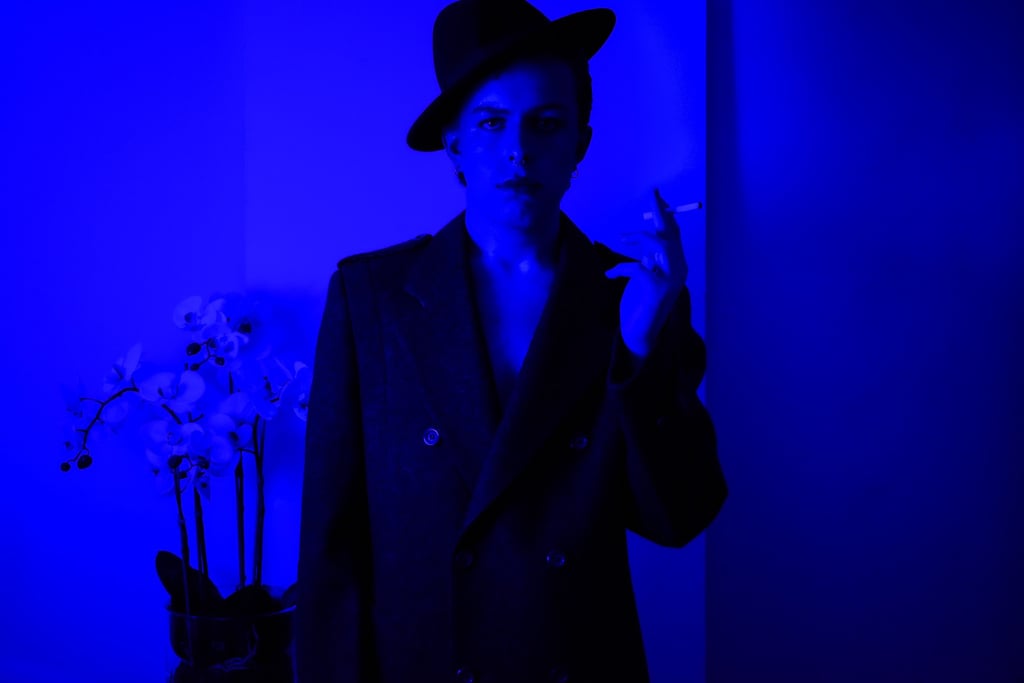

Ranging from art to music to film, the color blue has always been an effective mode of transportation for artists of all kinds to convey emotions in ways that sometimes words simply cannot. With Picasso’s Blue Period, we were able to finally visualize what melancholy really is, whereas Mitchell was able to. introduce the world to what blue would sound like. Sometimes even hints of the color have a certain quality, as shown in Lynch’s Blue Velvet. Within modern art, there has been a rise in the usage of blue once more, showing the endless possibilities for what the color can evoke. Though intense colors like red, yellow, and orange always pack a punch— there’s a certain power and range to blue that has always left artists reaching for more.
